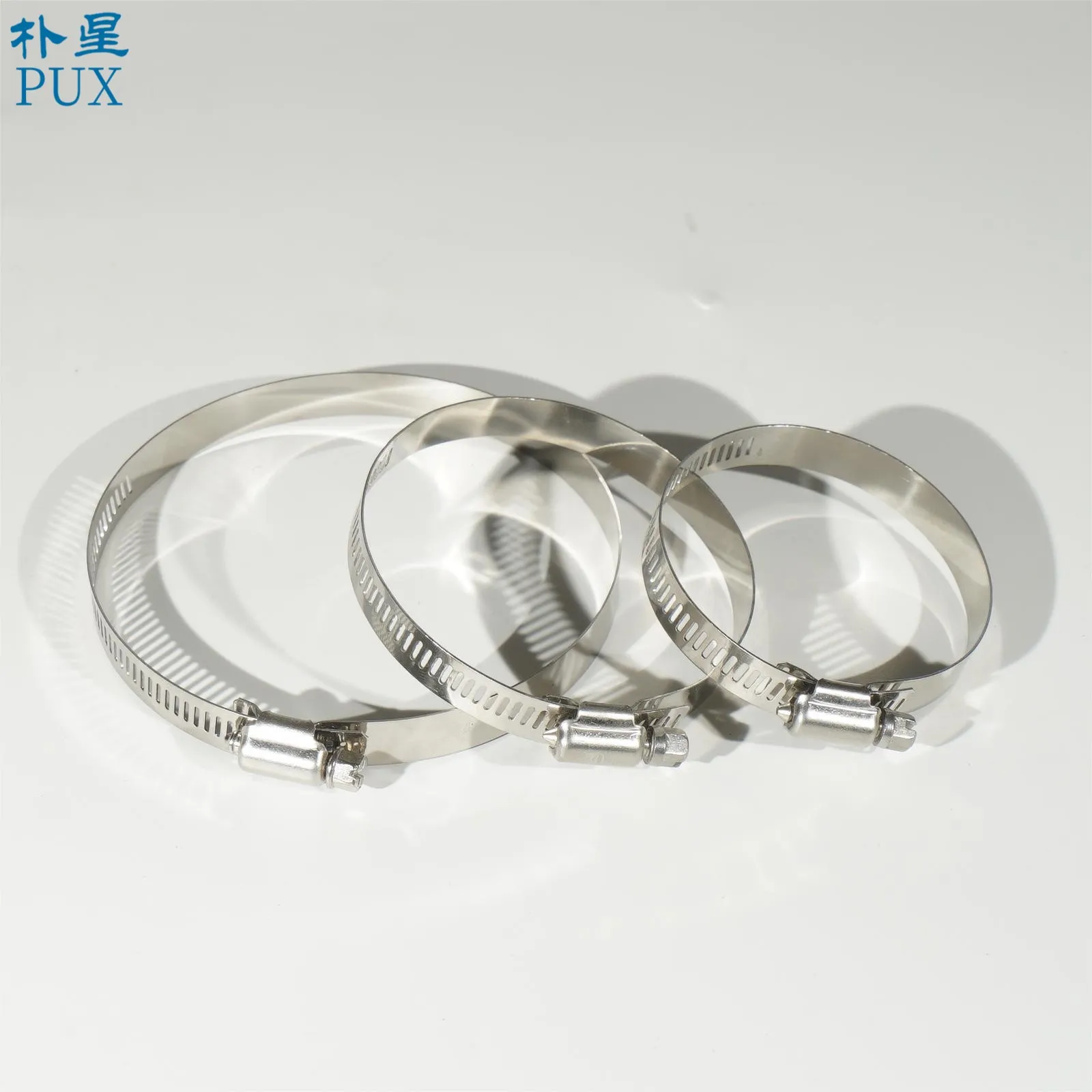- Phone:+86-17331948172 +86-0319-8862898
- E-mail: inquiry@puxingclamp.com
Nov . 11, 2024 11:15 Back to list
hose clamp tips manufacturers
Choosing the Right Hose Clamp Tips from Manufacturers
Hose clamps are essential components in various applications, ranging from automotive to industrial uses. They are designed to hold hoses tightly in place, preventing leaks and ensuring optimal performance of the systems they are used in. When selecting hose clamps, it’s valuable to consider tips and insights from manufacturers who specialize in producing these crucial items. Below are some key factors to consider when choosing hose clamps, as well as tips from manufacturers to ensure you make the right choice.
Types of Hose Clamps
Understanding the types of hose clamps available on the market is the first step in making an informed decision. The most common types include
1. Screw Hose Clamps These use a screw to tighten the clamp around the hose, offering a secure and adjustable fit. They are commonly used in automotive and plumbing applications.
2. Spring Hose Clamps These clamps apply consistent pressure on the hose, making them suitable for applications that experience temperature variations. They are often used in fuel lines or cooling systems.
3. Ear Clamps These are designed with tabs that are crimped together and are often used in manufacturing and high-pressure applications. They provide a reliable seal without the risk of loosening over time.
Each type of hose clamp has its advantages and disadvantages, and the right choice will depend on your specific application.
Material Selection
Manufacturers emphasize the importance of selecting the right material for your hose clamps. Common materials include
- Stainless Steel Highly durable and resistant to corrosion, making it a suitable choice for harsh environments. Stainless steel clamps are favored in automotive, marine, and industrial applications.
- Plastic Lightweight and resistant to corrosion, plastic clamps are ideal for low-pressure applications in areas where metal might corrode.
- Zinc-Plated Steel This material offers better corrosion resistance than regular steel; however, it is not as robust as stainless steel.
hose clamp tips manufacturers

When choosing the material, consider the operating environment, fluid types, and temperature ranges to ensure the longevity and effectiveness of the clamp.
Sizing and Fit
Getting the right size is critical when selecting a hose clamp. Manufacturers recommend measuring the outer diameter of the hose, as well as accounting for any changes in hose size due to temperature fluctuations or pressure. Typically, hose clamps are available in a range of sizes, and some manufacturers offer adjustable options to accommodate various hose dimensions.
To determine the best fit
- Use a caliper or measuring tape to measure the hose’s outer diameter. - Check the specifications provided by the hose clamp manufacturer to ensure compatibility.
Application Specificity
Different applications can require unique configurations. For instance, automotive use may necessitate heat-resistant materials, while food-processing applications might require clamps that meet sanitary standards. Talk to manufacturers about your specific needs, as many have insights into the best products for specialized applications.
Installation Techniques
Proper installation is crucial for optimal performance. Manufacturers recommend the following installation tips
- Ensure the hose is clean and free from debris before clamping. - Position the clamp evenly around the hose to distribute pressure evenly. - Tighten the clamp to the manufacturer’s specifications, avoiding overtightening, which can damage the hose.
Regular Inspection
Lastly, manufacturers highlight the importance of regularly inspecting hose clamps to ensure they maintain their integrity over time. Look for signs of wear, corrosion, or loosening, and replace any clamps that show signs of failure.
In conclusion, the proper selection and installation of hose clamps are vital for ensuring the reliability of hose connections across various applications. By understanding the types of clamps, choosing the right materials, ensuring proper sizing, and following installation guidelines, you can enhance the effectiveness and longevity of your hose assemblies. Always consult with manufacturers for their expertise and recommendations tailored to your specific needs, and remember that a good hose clamp is a pivotal investment in the performance of your systems.
-
Large Stainless Steel Adjustable American Type Hose Clamp - Hebei Pux Alloy Technology Co., Ltd
NewsAug.13,2025
-
Large Stainless Steel Adjustable American Type Hose Clamp - Hebei Pux Alloy Technology Co., Ltd. | Corrosion Resistance, High Torque
NewsAug.13,2025
-
Large Stainless Steel Adjustable Hose Clamp - Hebei Pux Alloy Technology Co., Ltd
NewsAug.13,2025
-
High Quality Hose Clamps & Mini Clips - German Stainless Steel
NewsAug.13,2025
-
Large Stainless Steel Adjustable American Type Hose Clamp - Hebei Pux Alloy Technology Co., Ltd
NewsAug.13,2025
-
Large Stainless Steel Adjustable American Type Hose Clamp - Hebei Pux Alloy Technology Co., Ltd | Corrosion Resistance, Adjustable Design
NewsAug.12,2025




